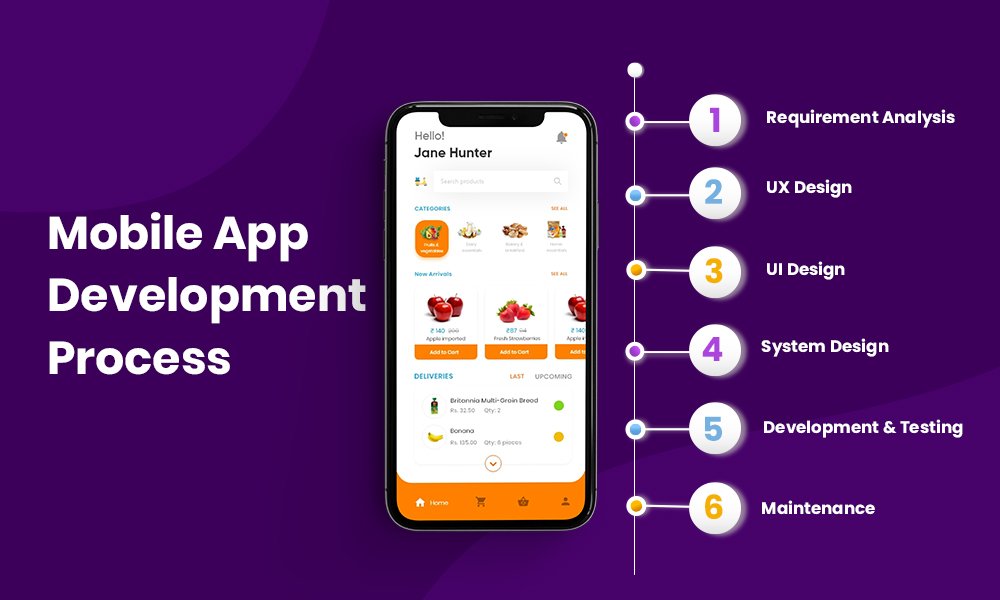Before embarking on a software development journey, it’s crucial to consider a few points. Firstly, consider if creating a mobile app is a strategic priority for your business. Developing a mobile application can be a costly endeavor, and it’s important to determine if it aligns with your digital strategy. Secondly, think about the implications of developing enterprise versus consumer-facing apps. The strategic questions will differ based on the end-users. If building an app for the world to try, you must ensure the uniqueness of your solution and its commercial purpose. On the other hand, if your employees are the end-users, their preferences and opinions should be considered. Lastly, determine whether to build your mobile app in-house or outsource to a development partner. The decision will depend on the availability of an experienced IT team within your organization and the ability to take on a mobile app project. If there are no available developers, outsourcing may be a suitable option to build a unique application for your business.
Application Development
The proliferation of mobile applications in the market continues to surge, with an increasing number of releases each day. Furthermore, the number of mobile devices globally has surpassed the world’s population. Consequently, it is not surprising that by 2026, mobile applications are estimated to generate a remarkable revenue of $233 billion. Given such promising projections, numerous companies are keen on exploring mobile app development opportunities. Some companies prioritize consumer-facing projects, aiming to generate revenue, whereas others opt for enterprise solutions that streamline internal processes and boost operational efficiency.
If your organization is interested in developing a mobile app, it is crucial to understand the app development process. In this regard, we will provide a comprehensive mobile app creation guide based on our experience to help you get started.

Strategy Development
The initial and crucial step in the app development process is defining the strategy, which involves carefully contemplating your app’s objectives, capabilities, and business model. Regardless of whether you are creating a consumer or enterprise app, identifying its primary objectives is essential. To accomplish this, it is necessary to answer critical questions such as the problem the app aims to solve, the target users, and the desired results. Although you may already have an idea for your app, outlining its key objectives will help you stay focused on your goals.
Additionally, researching existing or potential competitors is an integral aspect of strategy planning. Understanding the landscape of similar mobile apps and avoiding mistakes made by others within your industry will help you differentiate your app from the competition. Furthermore, selecting the appropriate platform for your app is vital, whether it is a custom Android solution, an iOS app, or a cross-platform application.
For consumer applications, selecting the appropriate monetization method is also crucial. Depending on your goals and the type of app you are developing, several options are available, including in-app advertising, in-app purchases, subscriptions, affiliate marketing, and paid apps. For instance, a dating app may leverage in-app purchases and subscriptions, while a game app may use in-app advertising and subscriptions. It is worth noting that the subscription-based monetization model is increasingly gaining popularity.
- UI/UX Design
- App Development
- Mobile App Testing
- Deployment
- Support and Performance Monitoring
UI/UX Design
To ensure optimal user experience, meticulous attention must be given to an app’s design. A cluttered or flawed design can drive users towards competitors, thereby jeopardizing the success of your app. Therefore, it is imperative that your UI/UX design be intuitive, user-friendly, engaging, and provide a seamless experience. In this regard, let us delve into each design area in detail.
Information architecture and workflows are the primary components of the app design process. At this stage, you must define the data to be incorporated in your app, its display, and how users will interact with it. Subsequently, you can create workflow diagrams that help keep track of all user interactions and facilitate easy navigation.
Business analysts create wireframes, which are digital sketches outlining the conceptual layout and visual structure of the app’s functionality. Wireframes prioritize user experience and app aesthetics to ensure that the final product is easy to use and visually appealing.
Style guides are essential to maintain consistency in your app’s design and branding. They provide instructions for fonts, color scheme, spacing, positioning, buttons, widgets, and other design elements, all in a single document.
App Development
Upon completion of the design phase, the next critical stage of the mobile app development process is the creation of the backend and frontend. The backend stage involves the development of databases and server-side objects responsible for the app’s performance. At this point, the development team selects appropriate programming languages, codes the app, and chooses database engines and a hosting environment. The scalability of the app in the future depends heavily on the backend stage, making it a crucial aspect of the app development life cycle. Engaging experienced software developers can help ensure that your system can scale effortlessly as your user base grows. On the other hand, the frontend is what the end-user will primarily interact with, and there are three approaches to building it: platform-specific, cross-platform, and hybrid. Each approach has its advantages and is selected based on the project’s specific requirements.
Key Considerations Before Starting the App Development Process
Post Tags :
Share :
